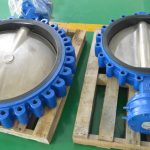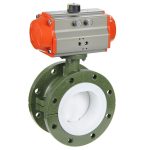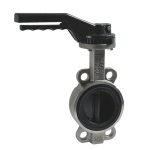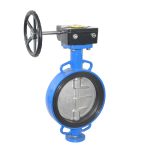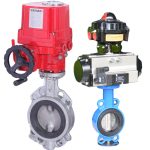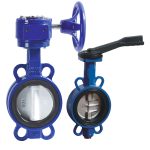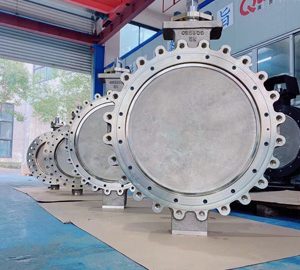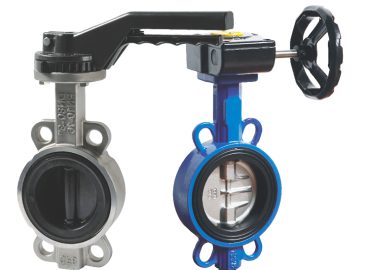Butterfly valves play a crucial role in fluid handling systems, providing precise control over the flow of liquids and gases. When it comes to purchasing a 2 inch butterfly valve price, there are several factors that can influence its price. Understanding these details is essential for making informed decisions and ensuring you get the best valve for your specific needs. In this blog post, we will explore the various factors that can affect the price of a 2-inch butterfly valve, from material and construction to certifications and additional features. By considering these aspects, you’ll be better equipped to make the right choice for your system while staying within your budget.
Introduction
When purchasing a 2 inch butterfly valve price, it’s essential to consider the various factors that can impact its price to ensure you’re getting the best value for your investment. The material and construction of the valve play a significant role in determining its cost; different materials such as stainless steel, cast iron, and plastic can have varying prices based on their durability and resistance to corrosion. Additionally, the type of butterfly valve, such as wafer, lug, or flanged, can also influence its price due to differences in design and functionality. Another important consideration is the disc and seat materials, which can range from stainless steel and bronze to EPDM and PTFE, affecting both the valve’s performance and cost. The actuation method, whether manual, electric actuator, pneumatic actuator, or hydraulic, will also impact the price, with more complex methods generally costing more. Brand reputation and manufacturer play a role in pricing as well, with well-known brands typically commanding higher prices due to perceived quality and reliability. Certification and compliance with industry standards, such as API, CE, and ISO, can also affect the cost, as valves meeting these requirements may be priced higher than those without certification. Additional features or customization options, like position indicators and limit switches, can further increase the price, as can order quantity and the potential for bulk discounts. By carefully considering these factors when selecting a 2-inch butterfly valve, you can make an informed decision that balances your system’s needs with your budget constraints.
Importance of butterfly valves in fluid handling systems
Butterfly valves are integral components in fluid handling systems, providing efficient control and regulation of the flow of liquids and gases. Their unique design, featuring a rotating disc that opens or closes the valve, allows for rapid and precise adjustments to flow rates with minimal pressure loss. This makes butterfly valves ideal for various industries, including water treatment, chemical processing, power generation, and HVAC systems. In addition to their excellent flow control capabilities, butterfly valves are also valued for their compact design, which saves space and reduces installation costs compared to other types of valves. Furthermore, their relatively simple construction and low maintenance requirements contribute to their overall cost-effectiveness and long service life. In summary, the importance of butterfly valves in fluid handling systems lies in their ability to provide reliable and accurate flow control, offering both operational efficiency and cost savings for a wide range of applications.
Factors that influence the price of a 2 inch butterfly valve
When it comes to purchasing a 2 inch butterfly valve price, several factors can influence its price, making it essential for buyers to be aware of these aspects to make an informed decision. Material and construction play a significant role in determining the cost, as valves made from different materials, such as stainless steel, cast iron, or plastic, come with varying prices based on their durability and corrosion resistance. The type of butterfly valve, whether wafer, lug, or flanged, also affects the price due to differences in design and functionality. Disc and seat materials, ranging from stainless steel and bronze to EPDM and PTFE, impact both the valve’s performance and cost. The choice of actuation method, including manual, electric, pneumatic, or hydraulic options, can further influence the price, with more advanced methods generally being more expensive. Brand reputation and the manufacturer also play a role in pricing, with well-known brands often commanding higher prices due to perceived quality and reliability. Certifications and compliance with industry standards, such as API, CE, and ISO, can affect the cost, as valves that meet these requirements may be priced higher than those without certification. Lastly, additional features or customization options, like position indicators and limit switches, can increase the valve’s price, as can order quantity and potential bulk discounts. By considering these factors when selecting a 2 inch butterfly valve price, buyers can ensure they are getting the best value for their specific needs and budget constraints.
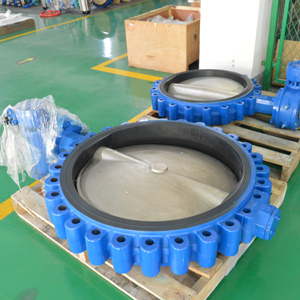
Material and Construction
The material and construction of a butterfly valve are crucial factors that significantly influence its price, performance, and longevity. Butterfly valves can be made from a variety of materials, including stainless steel, cast iron, ductile iron, bronze, and PVC, each with its own set of advantages and drawbacks. For example, stainless steel is known for its excellent corrosion resistance and durability, making it suitable for use in harsh environments and demanding applications, but it tends to be more expensive than other materials. Cast iron and ductile iron butterfly valves are more affordable options that provide good strength and durability, but they may be more susceptible to corrosion in certain environments. Bronze butterfly valves offer good corrosion resistance and are often used in marine applications, while PVC valves are lightweight, corrosion-resistant, and cost-effective but may not be suitable for high-temperature or high-pressure applications. The quality of construction also plays a significant role in determining the valve’s price, as well-made valves with tight tolerances and quality seals will generally be more expensive but offer better performance and longer service life. It is essential to carefully consider the specific requirements of your fluid handling system when selecting the appropriate material and construction for your butterfly valve, as this will ensure optimal performance and reliability while balancing cost considerations. By taking into account factors such as corrosion resistance, temperature and pressure ratings, and the nature of the media being handled, you can make an informed decision that meets your system’s needs and stays within your budget constraints.
Different materials used for butterfly valves (e.g., stainless steel, cast iron, etc.)
Butterfly valves are available in a wide range of materials to cater to the diverse requirements of various industries and applications. Some common materials used for butterfly valves include stainless steel, cast iron, ductile iron, bronze, and PVC. Stainless steel butterfly valves are known for their excellent corrosion resistance, durability, and suitability for high-temperature and high-pressure applications, making them a popular choice for many industries. Cast iron butterfly valves offer good strength and durability at a more affordable price point but may be more prone to corrosion, depending on the environment. Ductile iron butterfly valves share many of the advantages of cast iron valves but with improved strength and impact resistance, making them a more robust option for demanding applications. Bronze butterfly valves provide good corrosion resistance and are often used in marine and other corrosive environments. PVC butterfly valves are lightweight, corrosion-resistant, and cost-effective, making them suitable for a variety of low-pressure and low-temperature applications. Each material comes with its own set of advantages and limitations, so it’s essential to carefully consider the specific requirements and conditions of your fluid handling system when selecting the appropriate material for your butterfly valve.
Impact of material choice on price
The choice of material for a lug butterfly valve has a significant impact on its price, as different materials come with varying costs based on factors such as durability, corrosion resistance, and manufacturing complexity. Stainless steel butterfly valves, known for their excellent corrosion resistance and suitability for high-temperature and high-pressure applications, tend to be more expensive than other materials due to the higher cost of raw materials and the complexity involved in manufacturing. Cast iron and ductile iron butterfly valves are more affordable options that provide good strength and durability. However, their susceptibility to corrosion in certain environments may require additional coatings or treatments, which can affect the overall cost. Bronze butterfly valves offer good corrosion resistance and are often used in marine applications, but their price can be influenced by fluctuations in the metal market. PVC butterfly valves are typically the most cost-effective option, being lightweight and corrosion-resistant, but they may not be suitable for high-temperature or high-pressure applications, limiting their use in some industries. In summary, the material choice for a butterfly valve plays a crucial role in determining its price, and it’s essential to carefully consider the specific requirements and conditions of your fluid handling system to ensure you select the right material that balances performance, longevity, and budget constraints.

Quality of construction and its effect on pricing
The quality of construction of a butterfly valve plays a pivotal role in determining its price, as well-made valves with precise tolerances and high-quality seals typically command higher prices due to the increased manufacturing costs and the assurance of better performance and longer service life. Investing in a butterfly valve with superior construction ensures that the valve operates efficiently and reliably, minimizing the potential for leaks and reducing the need for frequent maintenance or replacements. High-quality construction often involves the use of advanced manufacturing techniques, stringent quality control measures, and premium materials, all of which contribute to the overall cost of the valve. However, it is important to note that while higher-priced valves may initially seem more expensive, their superior performance, durability, and reduced maintenance requirements can result in long-term cost savings. When selecting a butterfly valve, it’s essential to carefully consider the quality of construction in relation to your specific application needs and budget constraints, keeping in mind that investing in a well-constructed valve can ultimately lead to improved system performance and reduced total cost of ownership.
Type of Butterfly Valve
The type of butterfly valve plays a significant role in meeting the specific needs of various fluid handling systems, with each type offering distinct advantages and limitations. There are three main types of butterfly valves: wafer, lug, and flanged. Wafer butterfly valves are the most common and economical option, characterized by their slim design that fits between two pipe flanges without the need for additional fasteners. This compact design makes them ideal for space-constrained applications and allows for easy installation and maintenance. However, wafer butterfly valves are not suitable for dead-end service or applications requiring high-pressure resistance, as they lack the necessary structural support.
Lug butterfly valves, on the other hand, feature lugs that extend from the valve body and allow it to be bolted directly to the pipe flanges, providing greater strength and stability. These valves are suitable for dead-end service and can handle higher pressure applications compared to wafer valves. Lug butterfly valves also allow for the removal of downstream piping without disrupting the upstream flow, making them more versatile and easier to maintain. However, their increased complexity and sturdier construction often result in a higher price compared to wafer valves.
Flanged butterfly valves are designed with integral flanges that connect directly to the pipe flanges, providing a secure and leak-tight connection. These valves are ideal for applications requiring high-pressure resistance and long-term reliability, as their robust construction and strong connections minimize the risk of leaks and failures. Flanged butterfly valves are commonly used in large-diameter pipelines and critical applications, such as water treatment plants, power generation facilities, and chemical processing plants. However, their larger size, added weight, and increased manufacturing complexity make them the most expensive option among the three types of butterfly valves.
When selecting the appropriate type of butterfly valve for your fluid handling system, it’s essential to consider factors such as available space, pressure requirements, ease of maintenance, and budget constraints. By carefully evaluating the specific needs of your application and weighing the advantages and limitations of each type of butterfly valve, you can make an informed decision that optimizes performance, reliability, and cost-effectiveness.
Various types of butterfly valves (e.g., wafer, lug, flanged, etc.)
Butterfly valves come in various types, each with its own unique features and applications. Some common types include wafer, lug, and flanged butterfly valves. Wafer butterfly valves are characterized by their slim design, making them an economical and space-saving option for many industries. They are installed between two pipe flanges and held in place by the bolts that clamp the flanges together. However, they are not suitable for dead-end service or high-pressure applications due to their limited structural support. Lug butterfly valves feature lugs extending from the valve body, allowing them to be bolted directly to the pipe flanges. This design provides greater strength and stability, making them suitable for dead-end service and higher pressure applications. Lug valves also allow for easier maintenance, as they enable the removal of downstream piping without disrupting upstream flow. Flanged butterfly valves have integral flanges that connect directly to the pipe flanges, providing a secure and leak-tight connection. These valves are ideal for high-pressure applications and long-term reliability, as their robust construction minimizes the risk of leaks and failures. Flanged valves are commonly used in large-diameter pipelines and critical applications such as water treatment plants and power generation facilities. When selecting a butterfly valve for your fluid handling system, it’s essential to consider factors such as space, pressure requirements, ease of maintenance, and budget constraints to ensure you choose the most suitable type for your specific needs.
How the type of butterfly valve can affect the price
The type of butterfly valve can have a significant impact on its price, as each type comes with its own set of advantages and limitations that affect manufacturing complexity, raw material costs, and overall performance. Wafer butterfly valves are the most affordable option due to their simple design and ease of installation, making them a popular choice in many low-pressure applications. Lug butterfly valves are slightly more expensive than wafer valves due to their additional structural support and enhanced strength, making them suitable for dead-end service and higher-pressure applications. Flanged butterfly valves are the most expensive option due to their larger size, added weight, and increased manufacturing complexity. The integral flanges connecting directly to pipe flanges provide a secure and leak-tight connection, making them ideal for high-pressure and critical applications. However, their high price means they are often reserved for specialized applications where reliability is critical. When selecting a butterfly valve, it’s essential to consider the specific needs of your fluid handling system, along with the advantages and limitations of each valve type, in relation to your budget to ensure you choose the best option that balances performance, reliability, and affordability.
Disc and Seat Materials
The disc and seat materials of a butterfly valve play a crucial role in its performance and longevity, as they are exposed to the fluid being handled and the surrounding environment. The material choice for the disc and seat depends on factors such as fluid type, pressure, temperature, and chemical compatibility. Common materials used for the disc and seat of butterfly valves include metal, rubber, and plastics. Metal discs and seats offer excellent durability and resistance to high temperatures and pressure but may be susceptible to corrosion in certain environments. Rubber discs and seats provide excellent sealing capabilities and resistance to various chemicals, making them ideal for corrosive applications. However, they may not be suitable for high temperatures or abrasive applications. Plastic discs and seats are lightweight, cost-effective, and highly resistant to corrosion, making them ideal for many applications such as water treatment and sewage systems. However, they may not be suitable for high temperatures or high-pressure applications where metal is a better option.
Other factors that may impact the choice of disc and seat materials include the type of valve and the required flow rate. High-performance butterfly valves, for instance, require harder materials for the disc and seat to withstand the higher velocities and turbulence associated with high-flow rates.
In summary, the disc and seat materials play an essential role in the overall performance and reliability of a butterfly valve. When selecting the appropriate material for your butterfly valve, it’s important to carefully consider the specific requirements of your application, including the fluid type, pressure, temperature, and chemical compatibility. By selecting the right disc and seat materials, you can ensure optimal valve performance, longer service life, and reduced maintenance costs.
Different disc materials (e.g., stainless steel, bronze, etc.)
Butterfly valve discs are available in various materials, each with its own set of advantages and limitations. Stainless steel discs are a popular choice due to their excellent corrosion resistance, durability, and suitability for high-temperature and high-pressure applications. However, their higher cost can be a deterrent for some applications. Bronze discs offer good corrosion resistance and are often used in marine applications, but their price can be influenced by fluctuations in the metal market. Aluminum discs are lightweight and ideal for low-pressure applications, but they are not suitable for corrosive environments. Ductile iron discs offer good strength and durability, making them suitable for high-pressure and abrasive applications. However, they may be susceptible to corrosion and require additional coatings or treatments to improve their resistance to the fluid being handled. PVC and CPVC discs are commonly used in water treatment and chemical processing applications, offering excellent corrosion resistance and affordability, but they may not be suitable for high-temperature or high-pressure applications. When selecting the appropriate disc material for your butterfly valve, it’s essential to consider the specific requirements of your application, including the fluid type, pressure, temperature, and chemical compatibility, to ensure optimal valve performance and longevity.
Different seat materials (e.g., EPDM, PTFE, etc.)
Butfly valve seats are available in various materials, each with its own unique characteristics and applications. EPDM (ethylene propylene diene monomer) is a common material used for butterfly valve seats due to its excellent sealing capabilities, chemical resistance, and affordability. It is ideal for low-temperature applications and compatible with many fluids, making it a popular choice in the food and beverage industry. PTFE (polytetrafluoroethylene) seats offer excellent chemical resistance, high-temperature tolerance, and low coefficient of friction, making them suitable for corrosive and high-temperature applications such as chemical processing and pharmaceuticals. However, PTFE seats may not be suitable for high-pressure applications due to their lower strength compared to other materials. Viton seats are ideal for high-temperature and corrosive applications due to their excellent chemical resistance, while soft seat materials such as silicone and Buna-N provide excellent sealing capabilities but may require more frequent replacement due to their lower durability. When selecting the appropriate seat material for your butterfly valve, it’s essential to consider the specific requirements of your application, including the fluid type, pressure, temperature, and chemical compatibility, to ensure optimal valve performance and longevity.
How disc and seat materials can affect the price
The choice of disc and seat materials can have a significant impact on the overall price of a butterfly valve, as each material offers different advantages and limitations that affect manufacturing costs, raw material costs, and overall performance. For instance, stainless steel discs offer excellent durability and resistance to high temperatures and pressure, but their higher manufacturing and raw material costs make them more expensive than other materials such as aluminum or PVC. Similarly, PTFE seats offer excellent chemical resistance and high-temperature tolerance, making them ideal for corrosive and high-temperature applications, but their higher raw material costs may increase the overall cost of the valve. Soft seat materials such as silicone or Buna-N are less expensive but may require more frequent replacement due to their lower durability. The specific requirements of the application, including the fluid type, temperature, and pressure, should be considered when selecting the appropriate disc and seat materials. By choosing the most suitable materials for your application, you can ensure optimal valve performance, longer service life, and reduced maintenance costs. However, it’s essential to balance performance and material costs to ensure cost-effectiveness without sacrificing quality.
Actuation Method
Actuation method is an important consideration when selecting a butterfly valve, as it determines how the valve is controlled and operated. There are various actuation methods available, including manual, electric, pneumatic, and hydraulic actuation.
Manual actuation is the simplest and most affordable option, where the operator turns a handwheel or lever to control the valve position. Manual valves are commonly used in low-pressure applications or areas where power is not readily available.
Electric actuation uses an electric motor to control the valve, allowing for precise and efficient control of the valve position. Electric valves are ideal for applications where remote operation is required, such as in water treatment plants or wastewater treatment facilities.
Pneumatic actuation uses compressed air or other gases to control the valve’s position. Pneumatic valves offer fast and reliable operation and can be used in a wide range of applications, from high-temperature to corrosive environments.
Hydraulic actuation uses hydraulic fluid to operate the valve, providing precision control and high-pressure capabilities. Hydraulic valves are ideal for high-pressure applications, such as oil and gas pipelines, petrochemical plants, and power generation facilities.
When selecting the appropriate actuation method for your butterfly valve, it’s essential to consider factors such as the specific requirements of the application, the available power sources, and the desired level of control. The cost of each actuation method also varies, with manual being the most affordable and hydraulic being the most expensive. By choosing the most suitable actuation method, you can ensure optimal valve performance, efficient operation, and reduced maintenance costs.
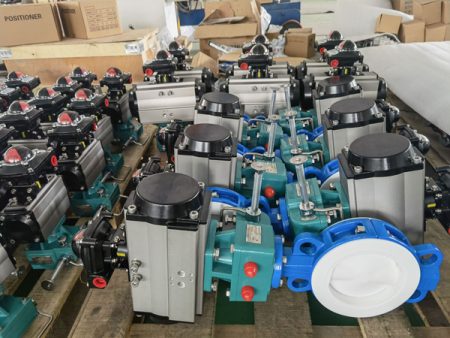
Different actuation methods (e.g., manual, electric, pneumatic, hydraulic, etc.)
Butterfly valves can be operated using various actuation methods, each with its own set of advantages and limitations. Manual actuation is the most straightforward and cost-effective option, requiring an operator to turn a handwheel or lever to control the valve position. Manual valves are ideal for low-pressure applications or areas where power is not readily available. Electric actuation uses an electric motor to control the valve position, offering precise and efficient control. Electric valves are ideal for remote operation, such as in water treatment plants or wastewater treatment facilities. Pneumatic actuation uses compressed air or other gases to control the valve’s position, offering fast and reliable operation and suitable for a wide range of applications, from high-temperature to corrosive environments. Hydraulic actuation uses hydraulic fluid to operate the valve, providing precision control and high-pressure capabilities. Hydraulic valves are ideal for high-pressure applications, such as oil and gas pipelines, petrochemical plants, and power generation facilities. The appropriate actuation method for your butterfly valve depends on the specific requirements of your application, including the level of control, power source availability, and desired efficiency and performance. By selecting the most suitable actuation method, you can ensure optimal valve performance, efficient operation, and reduced maintenance costs.
How the choice of actuation method can impact the price
The choice of actuation method can have a significant impact on the overall price of a butterfly valve, as each method offers different advantages and limitations that affect manufacturing costs, raw material costs, and overall performance. Manual actuation is the most affordable option, requiring no additional equipment or power source, making it ideal for low-pressure and small-scale applications. Electric actuation offers precise and efficient control, but the higher cost of electric motors and associated components increase the overall cost of the valve. Pneumatic actuation is suitable for a range of applications, providing fast and reliable operation, but the need for compressed air or other gases increases the installation and maintenance costs. Hydraulic actuation provides precision control and high-pressure capabilities but requires additional hydraulic equipment, increasing the overall cost of the valve. The specific requirements of the application, including the level of control, power source availability, and efficiency, should be considered when selecting the appropriate actuation method. By choosing the most suitable method for your application, you can ensure optimal valve performance, efficient operation, and reduced maintenance costs while balancing the cost and performance trade-offs of each method.
Brand and Manufacturer
When selecting a butterfly valve, considering the brand and manufacturer is crucial, as it can have a significant impact on the quality, performance, and long-term reliability of the valve. Established and reputable brands are known for their consistent manufacturing processes, adherence to industry standards, and use of high-quality materials, resulting in durable and reliable valves that can withstand the rigors of various applications. These brands often invest heavily in research and development, ensuring that their products are up-to-date with the latest technological advancements and best practices within the industry. Additionally, reputable manufacturers typically offer comprehensive customer support, including technical assistance, maintenance services, and warranties, which can provide peace of mind and reduce long-term ownership costs.
On the other hand, lesser-known or low-cost brands may not have the same level of quality control, leading to potential issues with valve performance, durability, and compatibility with specific applications. These brands may also lack the necessary customer support infrastructure, making it difficult to obtain assistance or replacement parts when needed.
When choosing a butterfly valve, it’s essential to research different brands and manufacturers, considering factors such as their industry reputation, product reviews, and certifications. While the initial cost of a valve from a reputable brand may be higher than that of a lesser-known brand, the long-term benefits of superior performance, durability, and customer support often outweigh the upfront cost difference. By selecting a butterfly valve from a trusted brand and manufacturer, you can ensure optimal valve performance, reduced maintenance costs, and increased reliability for your application.
Certification and Compliance
Certification and compliance are essential factors to consider when selecting a butterfly valve, as they ensure that the product meets specific industry standards and regulatory requirements. Certifications, such as ISO, API, or CE, indicate that the valve has undergone rigorous testing and evaluation by independent organizations to ensure its quality, performance, and safety. Compliance with industry standards, such as ASME, ANSI, or DIN, ensures that the valve’s design, materials, and manufacturing processes are in line with the best practices and guidelines established by professional organizations.
By choosing a butterfly valve with the appropriate certifications and compliance, you can have confidence in the product’s reliability, durability, and compatibility with your application. This is particularly important in industries with strict regulations and stringent safety requirements, such as oil and gas, petrochemical, food and beverage, or pharmaceutical sectors. Valves that meet these standards are more likely to provide consistent performance and reduce the risk of equipment failure, costly downtime, and potential safety hazards.
Furthermore, certification and compliance can also facilitate smoother communication and collaboration between different stakeholders within a project, such as engineers, contractors, and inspectors, as they can all trust that the valve meets the necessary requirements. This can lead to fewer delays and disputes during the installation, commissioning, and operation phases of a project.
In conclusion, when selecting a butterfly valve, it’s crucial to prioritize certification and compliance as key factors in your decision-making process. By ensuring that the valve meets the relevant industry standards and regulatory requirements, you can maximize performance, safety, and long-term reliability, while minimizing potential risks and costs associated with non-compliant products.
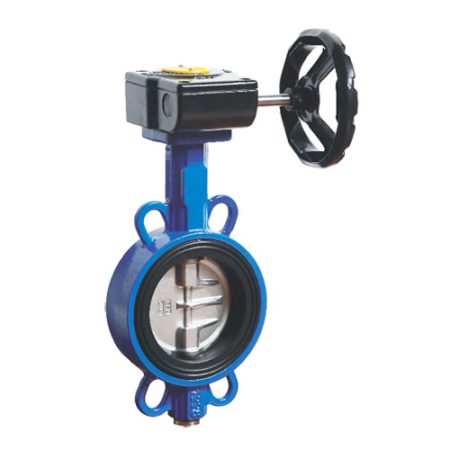
Additional Features or Customization
When selecting a butterfly valve, considering additional features or customization options can greatly enhance the valve’s performance and suitability for your specific application. These extra features or customizations can include specialized coatings for enhanced corrosion resistance, unique disc and seat materials for improved chemical compatibility, or extended temperature and pressure ratings to accommodate more demanding operating conditions. Additionally, some manufacturers offer custom-designed actuators or mounting brackets to ensure seamless integration with your existing infrastructure or control system.
Opting for these additional features or customization options can provide numerous benefits, such as increased valve lifespan, reduced maintenance requirements, and optimized performance in challenging environments. In turn, this can lead to lower long-term ownership costs and improved overall efficiency for your operation.
However, it’s essential to carefully evaluate the necessity and cost-effectiveness of these additional features or customizations, as they may come with higher upfront costs and longer lead times. To make an informed decision, it’s crucial to thoroughly understand your application requirements, including the type of fluid being controlled, the operating temperature and pressure ranges, and any specific industry regulations or standards that must be met.
In conclusion, considering additional features or customization options when selecting a butterfly valve can significantly improve its performance and suitability for your application. By carefully evaluating your requirements and weighing the costs and benefits of these enhancements, you can make a well-informed decision that ensures optimal valve performance, reduced maintenance costs, and increased reliability for your operation.
Quantity and Bulk Discounts
When purchasing butterfly valves for your projects or applications, considering the quantity required and potential bulk discounts can significantly impact the overall cost and budget. Manufacturers and suppliers often offer price breaks or volume discounts when purchasing larger quantities of valves, as it allows them to benefit from economies of scale in their production processes and reduce their per-unit costs. These savings are then passed on to the customer in the form of reduced prices for higher-volume orders.
Taking advantage of bulk discounts can lead to substantial cost savings, especially for larger projects or businesses that require a significant number of valves. These savings can be reinvested into other aspects of the project, such as upgrading to higher-quality materials or investing in additional features or customizations to enhance valve performance and durability.
However, it’s essential to carefully evaluate the actual requirements of your project or application to avoid over-purchasing and unnecessarily increasing your inventory levels. Maintaining excess inventory can lead to increased storage costs, potential obsolescence, and tying up capital that could be used elsewhere in your business.
To determine the optimal quantity for your purchase, consider factors such as the number of valves required for your current project, potential future projects, and the lead time for receiving additional valves if needed. Additionally, it’s crucial to maintain a strong relationship with your supplier, as they may be able to provide more favorable pricing or additional discounts based on your purchasing history or loyalty.
In conclusion, considering the quantity required and potential bulk discounts when purchasing butterfly valves can lead to significant cost savings and improved budget management. By carefully evaluating your requirements and maintaining a strong relationship with your supplier, you can maximize these savings while ensuring that you have the necessary inventory to meet your project or application needs.
Conclusion
In summary, there are numerous factors that can influence the price of a 2-inch butterfly valve, ranging from the choice of actuation method and brand or manufacturer to certification and compliance, additional features or customization options, and quantity or bulk discounts. Being aware of these factors and understanding their impact on the valve’s cost can help you make informed decisions when selecting the most suitable valve for your specific application.
The choice of actuation method, whether manual, electric, pneumatic, or hydraulic, can have a direct impact on the price of the valve. Each method offers different advantages and limitations, which affect manufacturing costs, raw material costs, and overall performance. By selecting the most appropriate actuation method based on your application requirements, you can strike the right balance between cost and performance.
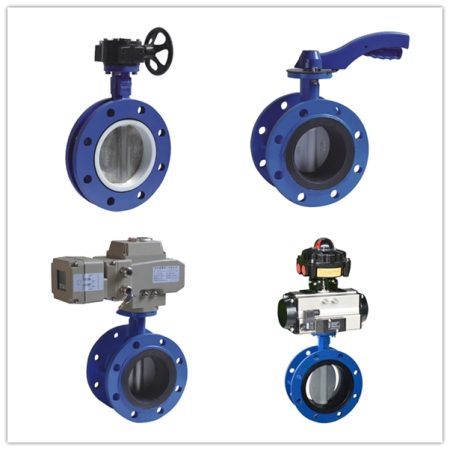
The brand and manufacturer play a crucial role in determining the quality, performance, and long-term reliability of the valve. Opting for a reputable brand with a history of consistent manufacturing processes, adherence to industry standards, and comprehensive customer support can provide peace of mind and reduce long-term ownership costs, even if the initial cost is higher than lesser-known alternatives.
Certification and compliance with industry standards and regulatory requirements are essential considerations, as they ensure the valve’s reliability, durability, and compatibility with your application. By selecting a valve with the appropriate certifications and compliance, you can minimize potential risks and costs associated with non-compliant products.
Additional features or customization options can enhance the valve’s performance and suitability for your specific application but may come with higher upfront costs and longer lead times. Carefully evaluating your requirements and weighing the costs and benefits of these enhancements can help you make an informed decision that ensures optimal valve performance, reduced maintenance costs, and increased reliability.
Lastly, considering the quantity required and potential bulk discounts can lead to significant cost savings, especially for larger projects or businesses that require a significant number of valves. By carefully evaluating your requirements and maintaining a strong relationship with your supplier, you can maximize these savings while ensuring that you have the necessary inventory to meet your project or application needs.
In conclusion, understanding the various factors that can affect the price of a 2 inch butterfly valve is essential for making well-informed purchasing decisions. By taking these factors into account and carefully evaluating your specific application requirements, you can select the most suitable valve that offers the ideal balance between cost, performance, and long-term reliability.




